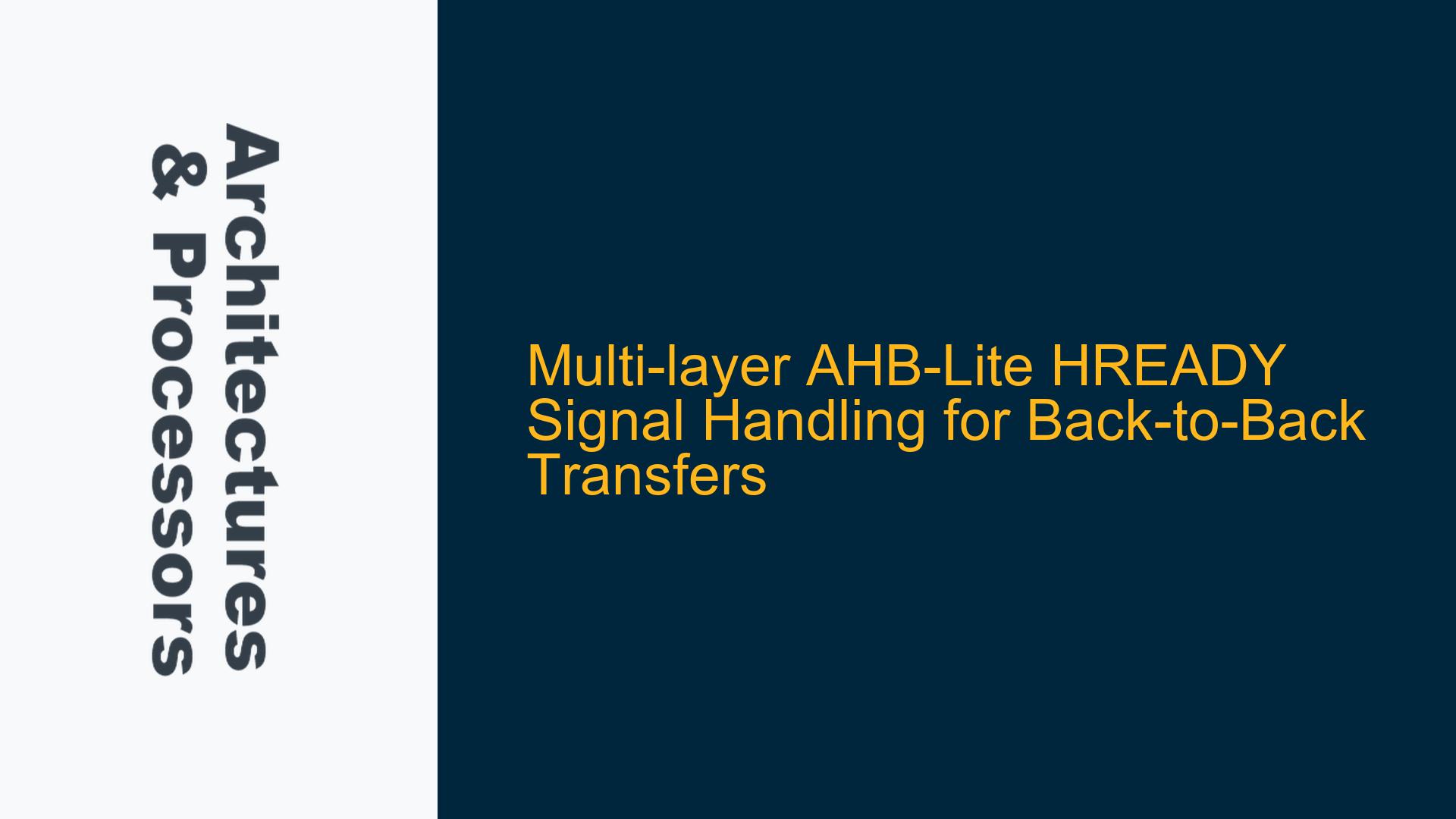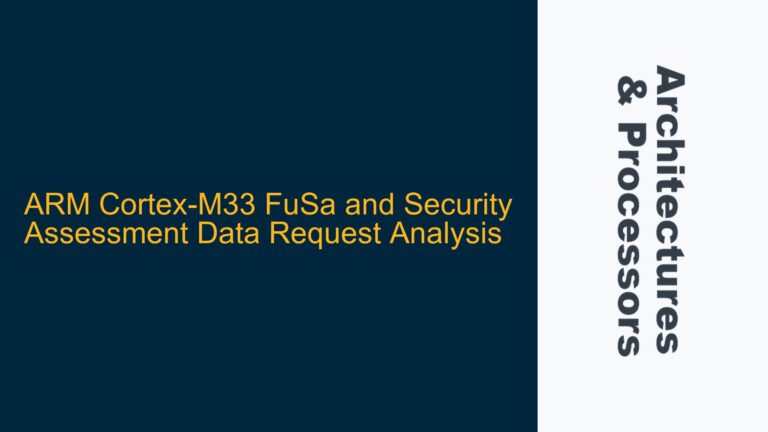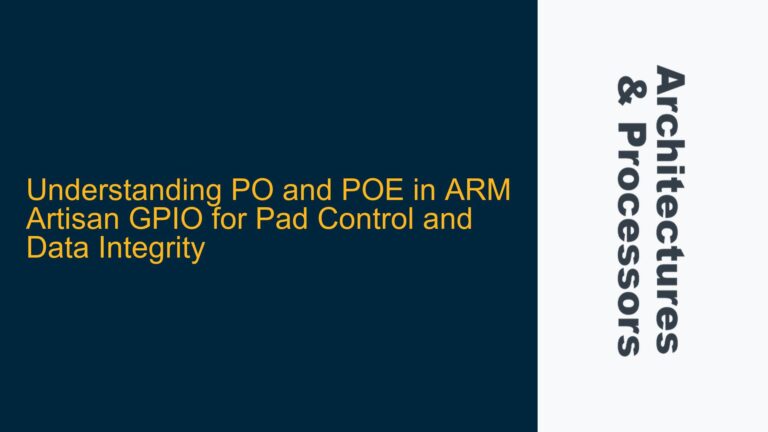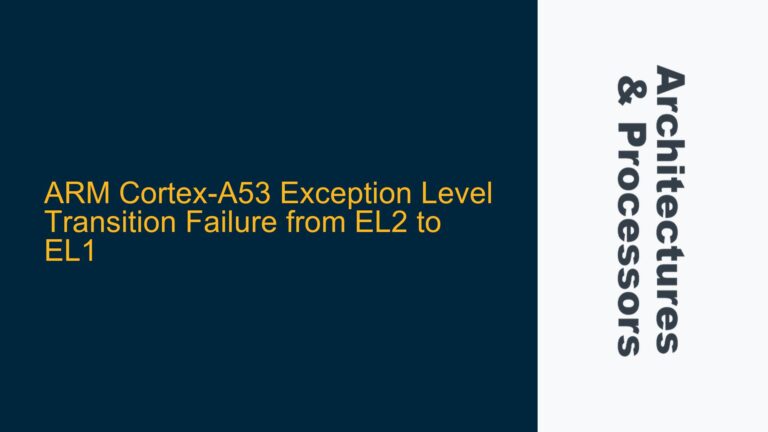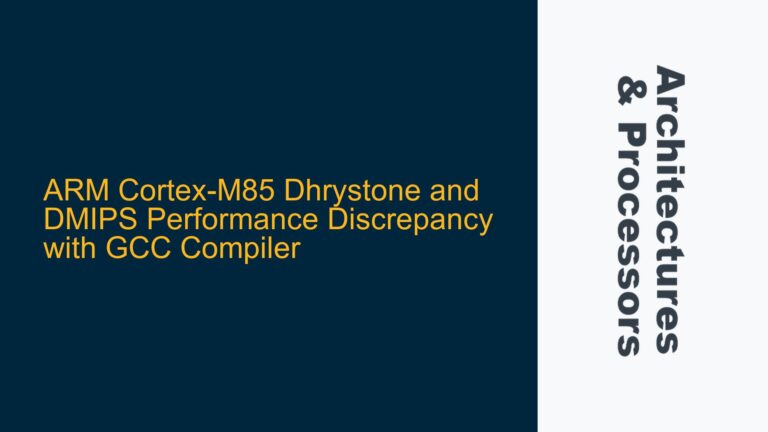Multi-layer AHB-Lite HREADY Signal Handling for Back-to-Back Transfers
In a multi-layer AHB-Lite system, the handling of the HREADY signal during back-to-back transfers from different managers can be a complex issue. The HREADY signal is crucial for ensuring proper data transfer and synchronization between managers and subordinates. When multiple managers attempt to access different subordinates in quick succession, the behavior of the HREADY signal must be carefully managed to avoid protocol violations and ensure data consistency.
Issue Overview
The core issue revolves around the handling of the HREADY signal in a multi-layer AHB-Lite interconnect matrix when two managers, M1 and M2, attempt to access different subordinates, S1 and S2, in a back-to-back manner. The scenario involves the following sequence of events:
-
Cycle 1:
- Manager M1 initiates a NONSEQ access to subordinate S1.
- Manager M2 initiates a NONSEQ access to subordinate S2.
- Both S1 and S2 are selected for their respective accesses.
-
Cycle 2:
- Manager M1 initiates a NONSEQ access to subordinate S2.
- Manager M2 drives IDLE.
- Subordinate S1 stalls the response to M1, as it is no longer selected for further transfers.
- Subordinate S2 drives a response to M2 but must wait for HREADY from S1 to rise before it can proceed with the access from M1.
-
Cycle 3:
- Manager M1 holds the control signals for access to S2.
- Manager M2 continues to drive IDLE.
- Subordinate S1 drives a response to M1 and raises HREADY.
- Subordinate S2 is selected for the NONSEQ access from M1.
-
Cycle 4:
- Both managers M1 and M2 drive IDLE.
- Subordinate S1 is in a "don’t care" state.
- Subordinate S2 drives a response to M1.
The critical point of contention is the behavior of the HREADY signal during the transition from M2’s access to S2 to M1’s access to S2. Specifically, the protocol check fires in Cycle 2 because S2’s HREADY is not expected to be low, even though S2 itself is not driving HREADYOUT low. This raises questions about the correct handling of the HREADY signal in multi-layer AHB-Lite systems and whether the observed behavior is compliant with the AMBA5 AHB-Lite specification.
Possible Causes
The observed behavior can be attributed to several potential causes related to the handling of the HREADY signal in a multi-layer AHB-Lite system:
-
HREADY Signal Propagation: In a multi-layer AHB-Lite system, the HREADY signal of any manager must follow the HREADYOUT of the subordinate currently in the data phase for that manager. This ensures that the manager does not proceed with the next transfer until the current transfer is complete. When the arbiter switches managers, the HREADY signal of the newly selected manager must also be applied to avoid bus collisions. In the given scenario, the HREADY signal from S1 is propagated to S2, causing S2 to wait for HREADY from S1 before proceeding with the access from M1.
-
Arbitration and Priority Handling: The arbitration scheme in the multi-layer AHB-Lite system follows a simple priority scheme, where M1 has priority over M2. The arbiter is designed to handle arbitration in a single cycle, without inserting wait states, unless the newly selected subordinate is already handling an active request from another manager. In the scenario, when M1 initiates an access to S2 in Cycle 2, the arbiter must ensure that S2 is available for the new access. However, since S2 is still processing the response to M2, the arbiter must wait for HREADY from S1 before allowing M1 to proceed with the access to S2.
-
Subordinate HREADYOUT Behavior: According to the AMBA5 AHB-Lite specification, the HREADYOUT signal from a subordinate must reflect the readiness of the subordinate to complete the current transfer. In the scenario, S2 is not driving HREADYOUT low, but the HREADY signal seen by S2 is low due to the propagation of HREADY from S1. This discrepancy can lead to protocol violations, as the subordinate expects HREADY to mirror HREADYOUT during an active data phase.
-
Protocol Compliance: The conflicting resources and documentation indicate that from a subordinate’s perspective, HREADY should always mirror HREADYOUT while it is in an active data phase. However, in the given scenario, the HREADY signal seen by S2 does not mirror HREADYOUT, leading to a protocol check failure. This suggests that the current implementation may not fully comply with the AMBA5 AHB-Lite specification, particularly in multi-layer configurations where multiple managers and subordinates are involved.
Troubleshooting Steps, Solutions & Fixes
To address the issue of HREADY signal handling in a multi-layer AHB-Lite system, the following troubleshooting steps, solutions, and fixes can be implemented:
-
Review and Update Arbitration Logic: The arbitration logic in the multi-layer AHB-Lite interconnect matrix should be reviewed to ensure that it correctly handles the transition between managers and subordinates. Specifically, the arbiter should be designed to account for the propagation of the HREADY signal from the current subordinate to the newly selected subordinate. This can be achieved by introducing additional logic to monitor the HREADY signal from the current subordinate and delay the selection of the new subordinate until the HREADY signal is high.
-
Modify HREADY Signal Propagation: The propagation of the HREADY signal in the multi-layer AHB-Lite system should be modified to ensure that it correctly reflects the readiness of the subordinate. This can be done by introducing a multiplexer that selects the appropriate HREADY signal based on the current manager and subordinate. The multiplexer should ensure that the HREADY signal seen by the subordinate mirrors the HREADYOUT signal during an active data phase.
-
Implement Protocol Compliance Checks: Additional protocol compliance checks should be implemented in the verification environment to ensure that the HREADY signal behavior is consistent with the AMBA5 AHB-Lite specification. These checks should monitor the HREADY and HREADYOUT signals for each subordinate and flag any discrepancies that may indicate a protocol violation. The checks should be designed to catch issues early in the verification process, allowing for timely resolution.
-
Update Subordinate Interface Logic: The interface logic for each subordinate should be updated to ensure that it correctly handles the HREADY signal during back-to-back transfers. This includes ensuring that the subordinate does not proceed with the next transfer until the HREADY signal is high. The subordinate should also be designed to handle the case where the HREADY signal is low due to the propagation of HREADY from another subordinate.
-
Simulate and Verify the Updated Design: The updated design should be thoroughly simulated and verified to ensure that the HREADY signal handling is correct and compliant with the AMBA5 AHB-Lite specification. The simulation should include various scenarios involving back-to-back transfers from different managers to different subordinates. The verification environment should be designed to cover all corner cases and ensure that the system behaves as expected under all conditions.
-
Consult ARM Documentation and Resources: The AMBA5 AHB-Lite specification and related ARM documentation should be consulted to ensure that the implementation is fully compliant with the protocol. Any discrepancies between the implementation and the specification should be addressed, and the design should be updated accordingly. Additionally, resources such as ARM’s Knowledge Articles (e.g., KA001342) can provide valuable insights into the correct handling of the HREADY signal in multi-layer AHB-Lite systems.
-
Engage with the ARM Community: Engaging with the ARM community and seeking feedback from other experienced designers can provide additional perspectives on the issue. The community can offer insights into best practices for handling the HREADY signal in multi-layer AHB-Lite systems and may provide solutions to similar issues encountered in other projects.
By following these troubleshooting steps and implementing the suggested solutions and fixes, the issue of HREADY signal handling in a multi-layer AHB-Lite system can be effectively resolved. The updated design will be compliant with the AMBA5 AHB-Lite specification and will ensure proper data transfer and synchronization between managers and subordinates.
